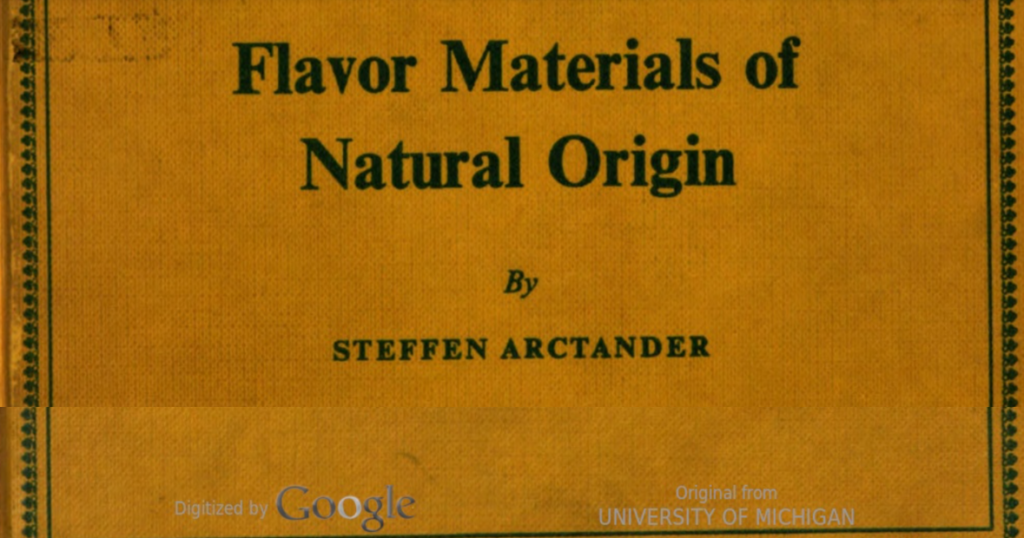
STEFFEN ARCTANDER
RUTGERS – THE STATE UNIVERSITY
The present work is the result of many years of private study to which has been added three years of evening and off-duty work, mainly at the University Extension Division of Rutgers – The State University of New Jersey.
Notes were collected and compiled from many lengthy travels to faraway producing areas. Samples were submitted to the author from other areas, and first-hand information was received from research stations, universities, distilleries, growers and exporters all over the world.
By august 1958, the author found himself in possession of an almost complete collection of perfume and flavor materials of natural origin. These materials were all available or could be made available upon request at due notice. Dozens of varieties and different qualities of each individual raw material were closely studied for appearance, odor, flavor and possible adulterations. Suggestions have been made in this book for the use of these materials in perfumes and flavors, based partly upon the author’s previous work, partly upon entirely new experiments which were carried out at the University Extension Division of Rutgers, The State University of New Jersey.
During three years of lecturing at the University Extension Division, the author became aware of the fact that the perfumery and flavor literature does not include any work that describes the odor and flavor of the raw materials from nature in everyday words. There is no recent or up-to-date handbook of raw materials suggesting the use of the materials, the replacement of one material for another, the proportional strength of flavor materials, etc. Furthermore, there was no up-to-date work which gave any practical indication of availability and present world production of these materials. Export figures are obviously not always indicative of the true production.
In order to present the compiled material in the handiest and most up-to-date form, the author decided to publish a one-volume dictionary form of practical handbook. The two-column set-up is a suggestion for which the author gives his printers all the credit and praise. The photographs are, with a few exceptions, taken by the author. Two-thirds of the photographs were taken during may-july 1960, and not a single photograph is more than five years old when this book appears. It was the author’s express wish that this work should include full-color reproductions of some of the flower photographs.
A work of this type is strongly subjective by its very nature. All odor and flavor experiments were carried out by the author personally, and were repeated as recently as possible in order to make the information most true to the facts. When literature sources are not given, it is because information was never taken for granted if it was at all possible for the author to check and re-check the information personally. This principle has been carried out throughout the book, and the author is convinced that this policy should be of definite advantage to the reader who seeks actual and practical information. No information or statement has been entered in the book without being checked during the five-year period 1956-1960, and the greater part of all information has been re-checked during 1959-1960.
The perfume and flavor trade has been veiled and concealed for decades, if not for centuries. It is true that perfumery and flavor creation is an art and a science, and we all realize that the art cannot be taught or developed by research through generations. But it is the author’s firm belief that science is a necessary part of perfumery and flavor creation. Consequently, we should not conceal what is already known or what can be concluded from the facts. In science, we all stand on the shoulders of our predecessors; our present knowledge is greater because they gave us a flying start. The same applies to that part of perfumery and flavor creation which is dependent upon science. It is the author’s hope that the present work may contribute to the wider and further expanded knowledge of perfume and flavor materials from nature.
Elizabeth, New Jersey (U.S.A.) August, 1960.
STEFFEN ARCTANDER
RUTGERS – THE STATE UNIVERSITY
